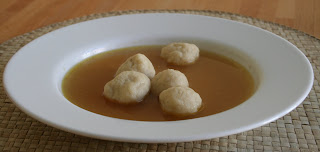
This recipe is adapted from the one given by Madhur Jaffrey in Indian Cookery, the book of the TV series she did for the BBC back in 1982. It’s a great book, which has lots of nice, clear recipes, although sometimes I think it’s a bit heavy on the ingredients and contains some unnecessary steps. Even these, though, have their charm. Her earnest instructions to pick through your lentils to check they don’t contain any stones are a sign of the book’s roots in a series of letters sent by her mother back in India, when Jaffrey first learnt to cook as a drama student in London. I can’t remember the last time I found a stone in my lentils.
Ingredients
500g potatoes
1 onion
500g frozen spinach
plenty of sunflower oil
2 cloves of garlic
2 teaspoons of black mustard seeds
1 teaspoon of turmeric
¼ teaspoon of cayenne pepper
1 teaspoon of salt
Method
plenty of sunflower oil
2 cloves of garlic
2 teaspoons of black mustard seeds
1 teaspoon of turmeric
¼ teaspoon of cayenne pepper
1 teaspoon of salt
Method
- Peel and cut the onion into very fine strips. Chop the garlic finely. Peel the potatoes and cut into 1-inch cubes.
- Heat plenty of sunflower in a large saucepan, add the onion and fry for a minute, then add the garlic and fry for another 30 seconds or so before adding the mustard seeds. Fry for another 30 seconds, then add the turmeric, cayenne pepper and salt, and stir well.
- Add the potato cubes, the spinach and enough water so the dish looks moist without it being too watery.
- Bring to a simmer, turn heat to minimum and cover. Cook until the potatoes are well done (probably around 40 minutes), stirring every so often and checking that there is still enough liquid. The final dish should be neither dry nor soupy, but juicy.







